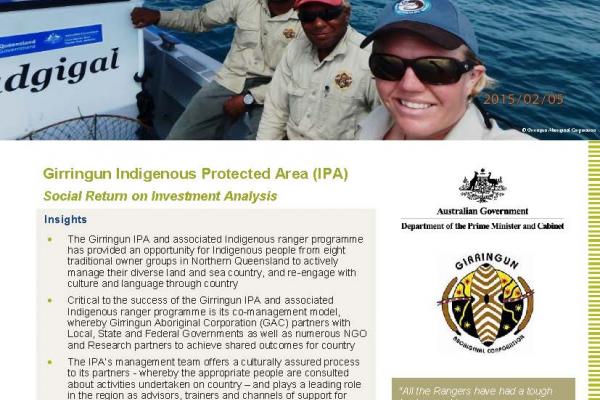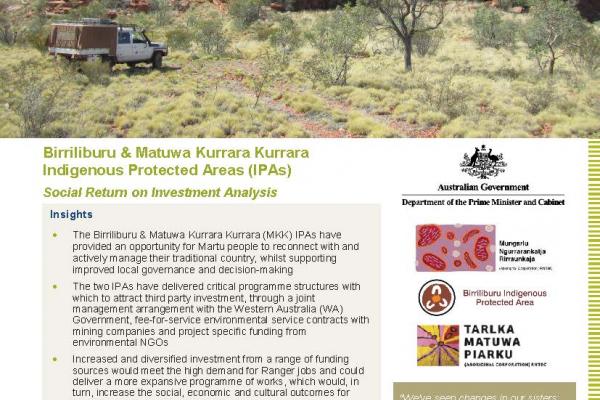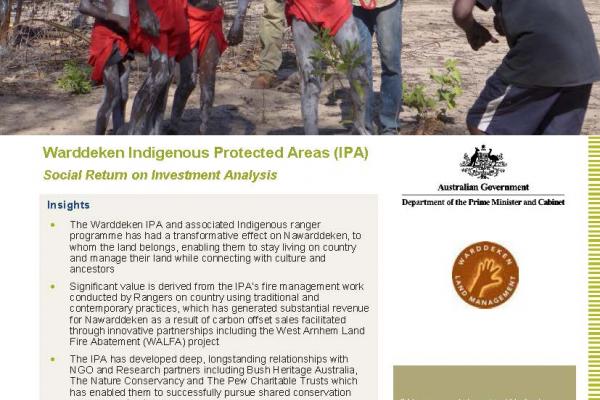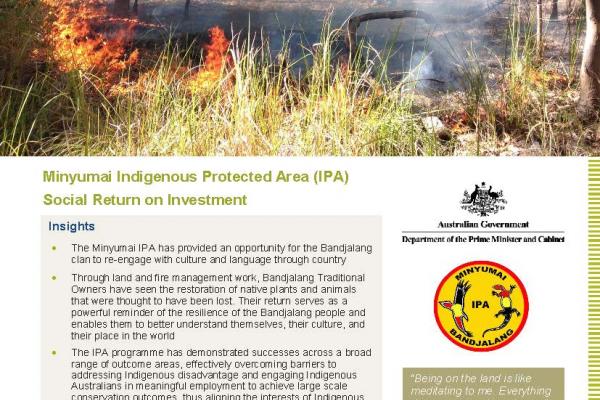Indigenous Protected Areas (IPAs) are areas of land and sea Country managed by First Nations groups in accordance with Traditional Owners’ objectives. IPAs deliver biodiversity conservation outcomes for the benefit of all Australians, through voluntary agreements with the Australian Government.
The IPA Program has been supporting First Nations communities to voluntarily dedicate and manage their land as protected areas since 1997. In addition to environmental resilience and cultural heritage protection, IPA program participants report benefits of empowerment, cultural connection and wellbeing, as well as broader socio-economic benefits for local communities.
Some areas of IPA land are recognised as part of the National Reserve System, for protection of the nation’s biodiversity and cultural heritage.
Most IPAs are dedicated under International Union for Conservation of Nature (IUCN) Categories 5 and 6, which promote a balance between conservation and other sustainable uses to deliver social, cultural and economic benefits for local Indigenous communities.
IPAs provide a framework for First Nations communities to combine traditional and contemporary knowledge to collaboratively manage their land and sea Country, leverage partnerships with conservation and commercial organisations and provide employment, education and training opportunities for First Nations people.
IPA projects are supported through multi-year funding agreements. Many Indigenous organisations also supplement this funding through fee-for service or other income generating activities, as well as support from private sector and philanthropic organisations. Some examples of IPA projects can be found at Stories from Country 2022.
| Indigenous Protected Areas (IPAs) | At October 2024 |
|---|---|
| Dedicated IPAs | 87 |
| Land covered by the IPAs | 90 million hectares |
| Sea covered by the IPAs | 6 million hectares |
Project locations
- Interactive map of summaries of Indigenous land and sea management projects supported by the Australian Government.
- Indigenous Protected Areas National Map - PDF 8MB
Next Phase of the IPA Program
The Australian Government is investing $231.5 million in the IPA Program from 1 July 2023 to June 2028. This delivers on the Government’s commitment to expand investment in IPAs by $10 million per year.
The NIAA and the Department of Climate Change, Energy and the Environment (DCCEEW) will continue to jointly administer the next phase of the program and are excited to announce successful grants for new and expanding Indigenous Protected Areas consultation projects below.
| IPA consultation project name | Organisation | State |
|---|---|---|
| Mount Willoughby IPA | Tjirilya Aboriginal Corporation | SA |
| Yanyuwa Sea Country IPA | Mabunji Aboriginal Resource Indigenous Corporation | NT |
| Bellinger Valley IPA Consultation Project | Yurruungga Aboriginal Corporation | NSW |
| Bringing Jagun Together | Jagun Alliance Aboriginal Corporation | NSW |
| Muunthiwarra, Alka Bawa and Kalpowar (MAK) IPA | Muunthiwarra Aboriginal Corporation | QLD |
| Wadja IPA Consultation Project | Wadja Aboriginal Corporation | QLD |
| Pormpuraaw Aboriginal Lands and Waters IPA | Pormpuraaw Deed of Grant in Trust | QLD |
| Western Miyarrka IPA Consultation Project | Gong-Dal Aboriginal Corporation | NT |
| Simpson Desert IPA | Central Land Council | NT |
| Nyamal IPA | Nyamal Aboriginal Corporation | WA |
| Wudjari IPA | Esperance Tjaltjraak Native Title Aboriginal Corporation RNTBC | WA |
| Yindjibarndi IPA | Yindjibarndi Aboriginal Corporation | WA |
For more details on the new IPA consultation projects see the DCCEEW website: Indigenous Protected Areas Program grants.
Progress
- The IPA Program was established by the Australian Government in 1997.
- In 2021, the Australian Government announced a complementary Sea Country IPA Program as part of the Oceans Leadership Package.
- In 2022, the Australian Government announced $231.5 million of additional funding for the next phase of the IPA Program from 1 July 2023 to June 2028.
- On 3 September 2023 the Nantawarrina IPA celebrated its 25th anniversary, being the first IPA dedicated by Traditional Owners in 1998.
- There are now 85 dedicated IPAs that make up 50 per cent of Australia’s National Reserve System, managed for the benefit of all Australians.
- More than 750 Aboriginal and Torres Strait Islander people were employed in full-time, part-time and casual jobs under the IPA Program in 2021-22, including approximately 360 women.
- 66 IPAs have management activities delivered by Australian Government-funded Indigenous ranger groups.
Sea Country IPA Program
On 23 April 2021, the Australian Government announced a $100 million investment to protect Australia’s ocean habitats and coastal environments and contribute to the global task of reducing emissions. As a component of this package, the Government committed $11.6 million over two years to June 2023 to expand the IPA network to include additional sea Country.
The Sea Country IPA Program seeks to expand the IPA network to include coastal and marine areas. The program seeks to strengthen the conservation and protection of Australia’s unique coastal and marine ecosystems, while creating employment and economic opportunities for Indigenous Australians.
On 7 May 2022, the Australian Government announced funding for 10 Sea Country IPA consultation projects. Combined, the 10 Sea Country IPA consultation areas cover over 6.2 million hectares of sea and over 200,000 hectares of land.
The projects support Indigenous-led consultation with Traditional Owners and other stakeholders, management planning, and the delivery of on-ground/water management activities. The projects are expected to generate up to 37 jobs for Indigenous Australians in remote and regional communities.
For more information refer to the Department of Climate Change, Energy, the Environment and Water (DCCEEW) webpage.
Evaluation of the IPA Program
The NIAA engaged the services of Ninti One Limited, who partnered with CSIRO and James Cook University to design and carry out an independent evaluation of the IPA Program.
The evaluation assessed the extent to which program objectives and associated environmental, cultural, social and economic outcomes are being achieved.
The evaluation was conducted in two phases:
- In Phase 1, Ninti One carried out a desktop review of existing information to guide the collection of new data during Phase 2.
- In Phase 2, Ninti One collected new data including direct engagement with IPA managers through site visits to 10 IPAs.
Ninti One analysed data from Phase 1 and Phase 2 to produce an evaluation report.
The NIAA and DCCEEW are considering recommendations from the evaluation report in preparing the management response, which will inform improved program delivery, including in monitoring and reporting.
The NIAA would like to thank IPA provider organisations for taking time to engage with the evaluation process.
A Final Evaluation Report is now available, as well as a Community Report which presents a brief summary of the Final Evaluation Report.



